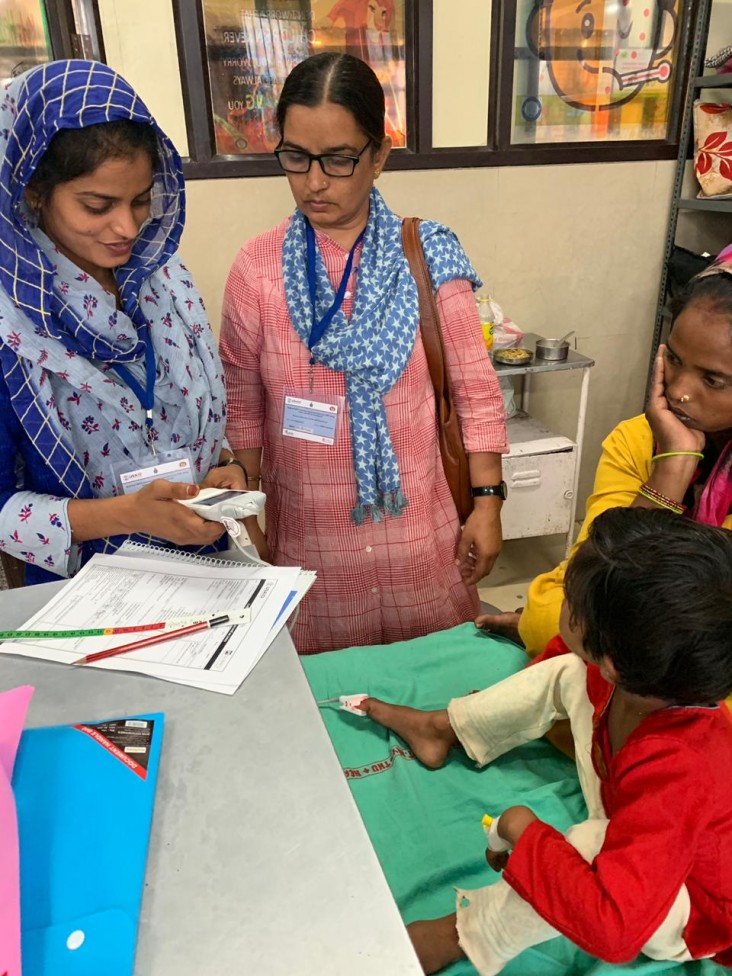Speeches Shim

In the Mewat district of India, USAID supported pilot testing of an innovative pulse oximeter, in partnership with a U.S.-based medical equipment manufacturer, that led to an increase in correct pneumonia case management from 11 to 90 percent and decline in antibiotic use from 79 to 34 percent in just one year.
Mumtaz Bano is a community health officer at a Health and Wellness Center in the Mewat district of India which serves more than 5,000 members of surrounding communities in one of the least developed areas in the country. In Mewat, Mumtaz works to improve newborn and child health by working with families to identify and treat infectious diseases.
While there has been significant progress in reducing under five mortality in India over the last ten years, children are still suffering disproportionately from preventable and treatable diseases. One of the leading cases of death for children in India is pneumonia, contributing to 15 percent of deaths for children under five.1 For health workers like Mumtaz in India, pneumonia is often difficult to diagnose without the right technology, despite increased training on diagnostic measures for childhood illnesses.
USAID works in the Mewat district of India to improve maternal and child health. In partnership with Masimo, a U.S.-based manufacturer, USAID implemented the use of a multimodal pulse oximeter in 19 health centers, including where Mumtaz works, to better diagnose pneumonia by measuring the respiratory rate and levels of oxygen in the blood. Through this partnership with Masimo, USAID supported health care workers in the Mewat district to increase correct pneumonia case management from 11 to 90 percent and decrease antibiotic use from 79 to 34 percent in just one year.
Mumtaz received a pulse oximeter from Masimo and participated in a three day training on Integrated Management of Neonatal and Childhood Illnesses in addition to receiving on the job training using the pulse oximeter. The benefits of using the pulse oximeter were seen immediately as the device made it easier for Mumtaz to correctly diagnose childhood pneumonia.
“Before, we saw only the cough and nothing else. We measured respiratory rate—that the child’s breathing is rapid, but there was no such classification as to whether the child had pneumonia or not. Now when the child comes, we use the device,” says Mumtaz.
From Pilot to Scale Up
With the introduction of the pulse oximeter to Mumtaz’s health center, there has been an increase in follow up appointments and increased trust in health care workers among community members.
“People have come to know that there is this machine, and they feel happy,” explains Mumtaz. “When they come for their follow up and they find that their child no longer has pneumonia, they feel very happy and the fear that they had before disappears.”
With the success of using the pulse oximeter in the Mewat district, state governments in India are planning to expand and scale up the use of the device with their own resources. By partnering with Masimo, USAID is helping increase the capacity of health workers to better manage childhood pneumonia and support India on its Journey to Self-Reliance.
Download the PDF version of this story. [PDF, 640K]
1 McAllister DA et al. Global, regional, and national estimates of pneumonia morbidity and mortality in children younger than 5 years between 2000 and 2015: a systematic analysis. Lancet Glob Health. 2018

Comment
Make a general inquiry or suggest an improvement.